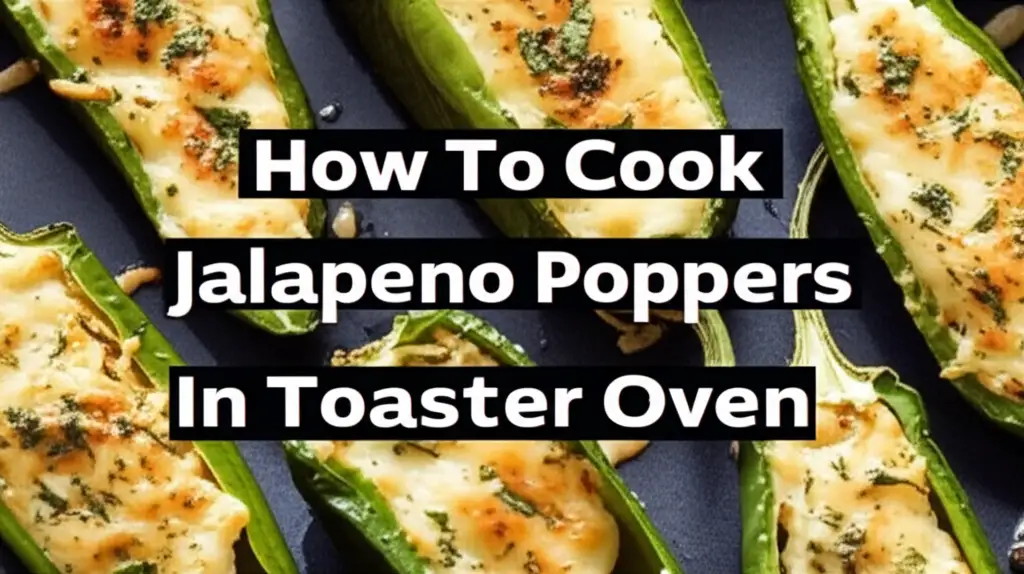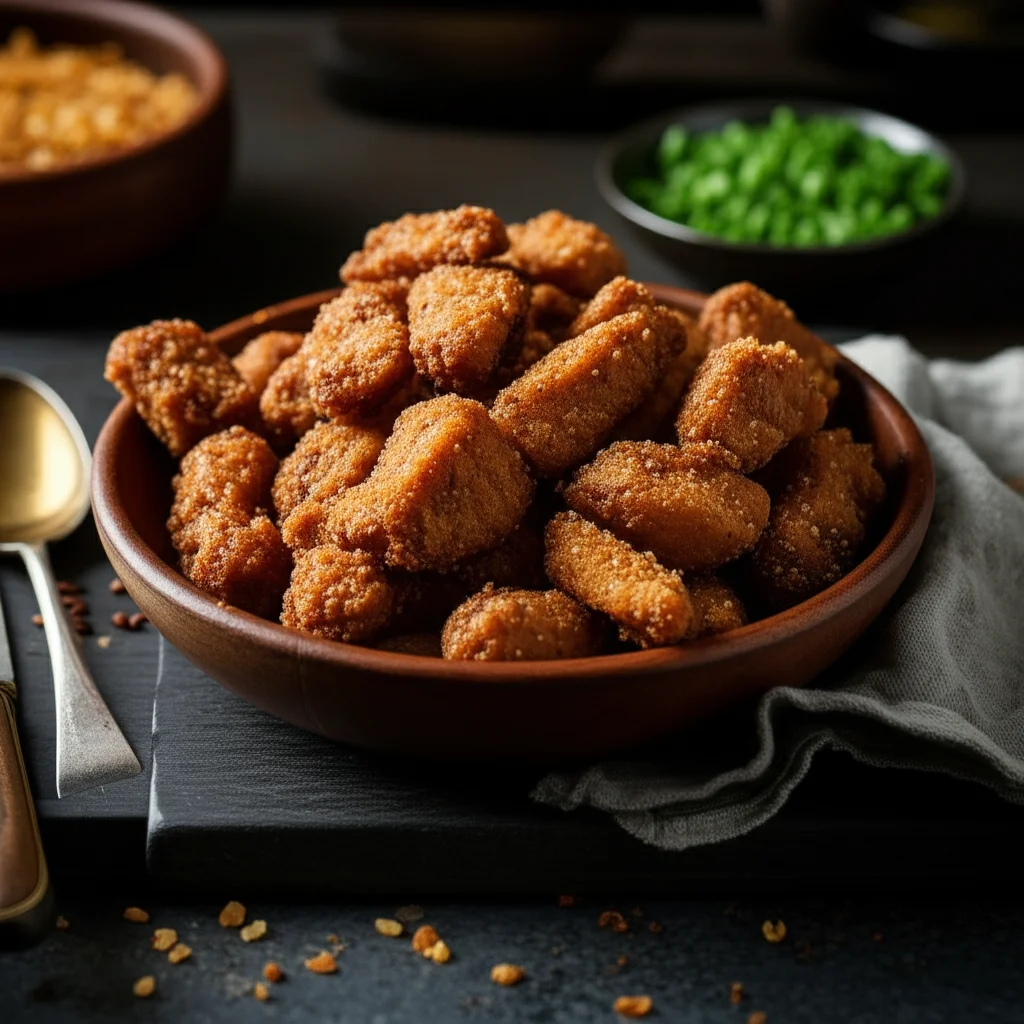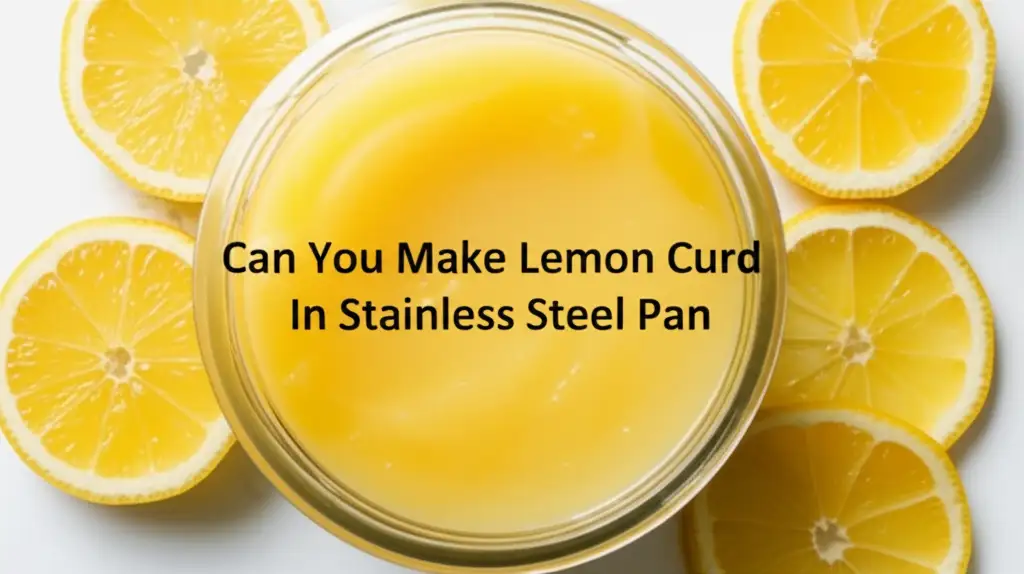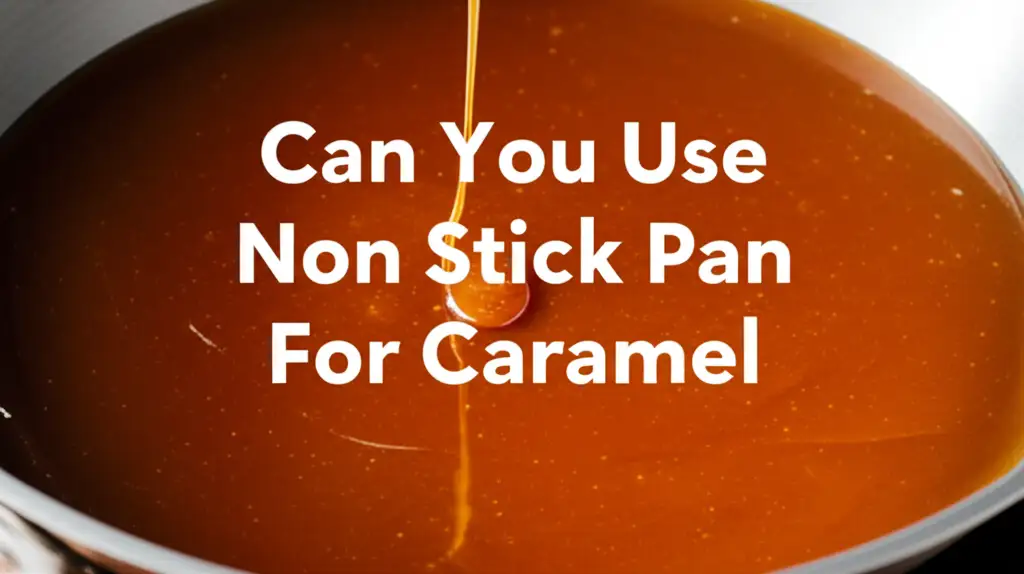· Kianna Connelly · Cooking Tips · 20 min read
Can I Use Saucepan Instead Of Skillet
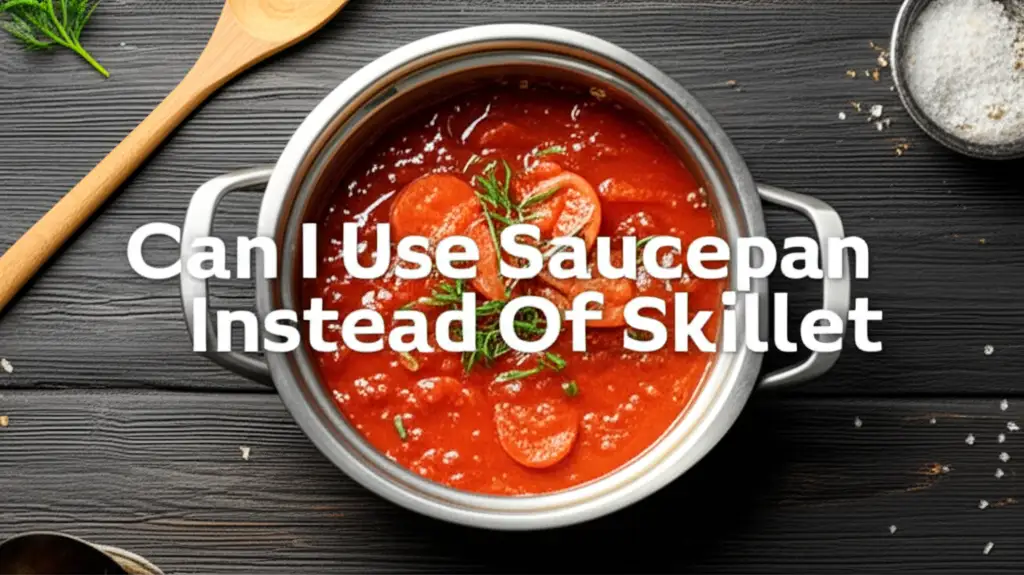
Mastering Your Kitchen: Can I Use a Saucepan Instead of a Skillet?
Have you ever found yourself in the kitchen, ready to cook, only to realize you need a skillet but only have a saucepan handy? It happens to the best of us. Many home cooks wonder, “Can I use a saucepan instead of a skillet?” This common kitchen dilemma prompts an important question about cookware versatility. Understanding the primary functions and design differences between these two essential kitchen tools helps you make smart substitutions. This article explores the distinct roles of saucepans and skillets, explains when a saucepan can step in, and offers practical advice for adapting your cooking. We will cover the limitations, material considerations, and crucial tips for successful swaps, ensuring you always have the right tool, even if it’s a stand-in.
Takeaway
- A saucepan can sometimes substitute for a skillet, especially for dishes focused on simmering, braising, or deep-frying small items.
- Skillets excel at browning, searing, and stir-frying due to their wide, shallow cooking surface.
- When using a saucepan as a skillet, cook in smaller batches to avoid overcrowding and steaming food.
- Adjust heat and cooking times; be mindful of limited surface area and higher sides.
- Cookware material impacts performance; choose wisely for the task at hand.
Yes, you can often use a saucepan instead of a skillet, but success depends on the specific cooking task. Saucepan excels at liquid-based cooking and simmering, while skillets are ideal for tasks needing wide surface contact for browning and searing. The swap works best for dishes that do not require extensive browning or quick evaporation.
Understanding Cookware Basics: Saucepan vs. Skillet Design
Let’s begin by looking at the fundamental differences between a saucepan and a skillet. Knowing their unique designs helps us understand their intended uses. Each piece of cookware is crafted to perform specific cooking tasks most effectively.
The Saucepan: A Deep Dive into Design
A saucepan is a tall, narrow pot with straight, high sides and a flat bottom. It typically comes with a lid and has a long handle, sometimes with an additional helper handle on the opposite side for larger sizes. This design makes the saucepan excellent for cooking with liquids.
- High Sides: The elevated sides minimize liquid evaporation. This feature is perfect for simmering sauces, boiling pasta, or making soups. The high walls also contain splatters, keeping your stovetop cleaner when cooking liquid-heavy dishes.
- Smaller Diameter: Compared to a skillet of similar capacity, a saucepan has a smaller cooking surface area. This concentrates heat and liquid. It helps liquids come to a boil faster and maintain temperature more easily.
- Lid Inclusion: Most saucepans include a tight-fitting lid. This lid traps steam and moisture, which is vital for simmering, stewing, and cooking grains like rice. It also helps in retaining heat.
- Primary Uses: Saucepan is designed for boiling water, making sauces, cooking grains, and heating soups. It excels at tasks where liquid control and heat retention are priorities.
The Skillet: Function Meets Form
A skillet, also known as a frying pan, presents a stark contrast to the saucepan. It features shallow, sloped, or flared sides and a wide, flat cooking surface. Skillets also typically have a long handle. Their design aims for maximum surface contact with heat and easy manipulation of food.
- Shallow, Sloped Sides: These low, angled sides are crucial for several cooking techniques. They allow for easy flipping and turning of food. The sloped design also facilitates evaporation, preventing food from steaming.
- Wide Cooking Surface: The large, flat bottom of a skillet offers ample space. This maximizes contact between the food and the hot surface. It is essential for browning, searing, and achieving a crispy texture.
- Open Design: Skillets are often used without a lid, or with a loosely fitting one. This open design promotes air circulation. It allows moisture to escape, which is vital for frying and sautéing.
- Primary Uses: Skillets are the go-to for frying eggs, searing steaks, sautéing vegetables, and stir-frying. They are perfect for any task where browning, caramelization, and quick cooking are desired.
Understanding these design differences is the first step in deciding when to use a saucepan instead of a skillet. Each tool is optimized for distinct cooking environments.
Can a Saucepan Replace a Skillet? Core Differences Explored
The question of substituting a saucepan for a skillet is common in home kitchens. While they share the stovetop, their designs make them suitable for different cooking methods. Knowing these core differences helps you decide if a swap will work for your recipe.
The main difference lies in their shape and resulting heat dynamics. A skillet has a wide, shallow base with flared sides. This design maximizes the cooking surface exposed to direct heat. It allows for efficient evaporation of moisture. This is vital for browning, searing, and achieving crispy textures. Think of a steak, golden-brown pancakes, or perfectly seared vegetables; these results depend on moisture evaporating quickly.
A saucepan, conversely, features high, straight sides and a smaller base diameter relative to its capacity. This design minimizes the exposed surface area. It significantly reduces evaporation. Saucepan is ideal for simmering liquids, boiling water, and cooking dishes where moisture retention is key. Consider cooking pasta, making a delicate sauce, or preparing soup; these tasks benefit from the saucepan’s ability to hold heat and liquid efficiently.
Another key distinction is how heat distributes. Skillets often have a thicker bottom to ensure even heat across their wide surface. This helps prevent hot spots during frying or searing. Saucepan bases are also designed for even heat but prioritize retaining warmth for simmering. The walls of a saucepan also retain heat, keeping liquids at a consistent temperature for longer.
The overall cooking environment created by each piece of cookware differs greatly. A skillet offers an open, high-heat, high-evaporation environment. This promotes quick cooking and browning. A saucepan provides a contained, moist, and stable heat environment. This is perfect for slow cooking, simmering, and boiling. Therefore, while a saucepan might hold food, it changes the cooking outcome significantly from what a skillet provides.
When a Saucepan Becomes Your Go-To Skillet Alternative
Despite their distinct purposes, a saucepan can surprisingly step in for a skillet in certain situations. When your recipe doesn’t heavily rely on browning or requires controlled liquid, your saucepan might be a capable substitute. Let’s explore scenarios where this cookware swap works well.
Simmering and Braising Dishes: If your dish primarily involves simmering or braising, a saucepan is an excellent alternative. For example, making a small batch of chili, a rich pasta sauce, or a slow-cooked stew. These recipes require liquid to reduce slowly and flavors to meld over time. The saucepan’s high sides are perfect for containing these liquids and minimizing evaporation. You can start by sautéing aromatics like onions and garlic in the saucepan, then add your liquids and other ingredients for simmering. This function is very similar to what a deeper skillet or a Dutch oven might offer.
Deep Frying Small Batches: While a skillet can be used for shallow frying, a saucepan is actually superior for deep frying small items. Its high sides help contain oil splatters and maintain a consistent oil temperature. For instance, frying a few doughnuts, chicken nuggets, or small batches of French fries. Ensure the saucepan is heavy-bottomed to distribute heat evenly and prevent scorching. Always be cautious with hot oil and do not overfill the pan.
Cooking Grains and Pasta: Though this is a saucepan’s primary role, it’s worth noting its effectiveness here. If your recipe involves cooking grains like rice or quinoa, or boiling pasta, a saucepan is the ideal choice. While a deep skillet could theoretically boil water, the saucepan’s design ensures quicker boiling and less evaporation, saving energy and time. Its high walls prevent water from boiling over easily.
Sautéing Vegetables (with caution): For recipes where vegetables need to be softened rather than extensively browned, a saucepan can work. Think about cooking down spinach, softening diced onions for a soup base, or sautéing mushrooms to add to a casserole. The key here is to avoid overcrowding the pan. Cook in small batches to give vegetables enough space. If you add too much, they will steam instead of sauté, leading to a watery texture.
Making Pan Sauces: After cooking meat in a skillet, you often deglaze the pan to create a sauce. If you cooked the meat in a larger, deeper skillet or even seared it elsewhere, you can transfer the fond (browned bits) and liquid to a saucepan. The saucepan’s design is perfect for simmering and reducing these pan sauces to the desired consistency. Its narrow opening allows for better control over the reduction process.
In these specific instances, the saucepan’s design features align well with the cooking needs. It proves to be a versatile tool, capable of handling tasks usually associated with a skillet, provided you understand its limitations and adapt your technique.
Limitations: When a Skillet Is Simply Irreplaceable
While a saucepan offers versatility, there are clear scenarios where a skillet is the only suitable tool for the job. Its unique design allows for specific cooking outcomes that a saucepan cannot replicate effectively. Understanding these limitations prevents culinary disappointment.
Searing and Browning Meats: The primary strength of a skillet lies in its ability to sear and brown. When you want a beautiful, crispy crust on a steak, chicken breast, or pork chop, a skillet provides the necessary direct, high heat contact. Its wide, flat surface ensures maximum contact between the meat and the heat source. This process creates the Maillard reaction, which develops complex flavors and attractive browning. A saucepan’s high sides trap moisture, causing the meat to steam rather than sear, resulting in a grayish, less flavorful exterior.
Stir-Frying: Authentic stir-frying demands high heat and rapid evaporation. A skillet’s wide surface and sloped sides are perfect for tossing and turning ingredients quickly. This allows vegetables to stay crisp-tender and proteins to cook through without becoming watery. Using a saucepan for stir-frying would lead to overcrowding. Ingredients would steam in their own juices due to the limited surface area and trapped moisture, losing their vibrant color and texture.
Pan-Frying and Shallow Frying: Tasks like cooking pancakes, quesadillas, or shallow-frying schnitzel require a broad, consistent cooking surface. A skillet offers the expansive flat bottom needed for these foods to cook evenly. It ensures uniform browning across the entire surface. A saucepan’s smaller diameter means you can only cook one or two items at a time, or the items will overlap and cook unevenly. The high sides also make it difficult to flip items.
Achieving Crispiness: Many dishes rely on a crisp texture, such as crispy fried potatoes, perfectly golden hash browns, or crunchy fried chicken. The skillet’s design promotes the rapid evaporation of moisture, which is essential for crisping. The open top and wide base allow steam to escape efficiently. A saucepan traps steam, leading to soggy results instead of crispy ones.
Cooking Large Batches that Need Even Heat: If you’re cooking a large quantity of vegetables or protein that needs even browning, a skillet is indispensable. Overcrowding any pan leads to steaming, but it’s particularly problematic in a saucepan. A large skillet allows ingredients to spread out in a single layer, ensuring consistent heat application to each piece. This is crucial for uniform cooking and preventing a mushy texture.
In summary, for any task requiring significant browning, searing, rapid evaporation, or cooking large, flat items, a skillet is the superior and often irreplaceable tool. Trying to force a saucepan into these roles will likely lead to disappointing culinary outcomes.
Practical Tips for Using a Saucepan as a Skillet
When you must use a saucepan in place of a skillet, knowing a few adaptation tricks can make a big difference. These tips help mitigate the design differences and still achieve decent results. Remember, the goal is to mimic the skillet’s environment as much as possible within the saucepan’s limitations.
1. Cook in Smaller Batches: This is perhaps the most important tip. The saucepan has a smaller cooking surface. Overcrowding it will cause food to steam instead of brown. If you are sautéing vegetables or browning meat, cook a small amount at a time. This allows each piece to make direct contact with the hot surface. Remove the first batch, then add more ingredients. Repeat this process until all ingredients are cooked. This strategy ensures proper browning and prevents moisture buildup.
2. Increase Heat (Cautiously): Since a saucepan’s high sides trap more moisture, you might need slightly higher heat to encourage evaporation and browning. Start with medium-high heat and adjust as needed. However, be very careful not to burn your food or overheat the oil. Always monitor the temperature closely. Use oils with a high smoke point.
3. Use Less Oil (for Sautéing/Frying): The narrower base of a saucepan means less surface area for oil to spread out. You generally need less oil than you would in a wide skillet to cover the bottom effectively. Too much oil can lead to greasy results, especially in a contained environment like a saucepan. Start with a small amount and add more only if necessary.
4. Be Mindful of Moisture Control: The saucepan’s high sides are designed to retain moisture, which is counterproductive for browning. If you are trying to brown something, do not use the lid. Allow steam to escape freely. If your food is getting too watery, you might need to pour off excess liquid temporarily. For dishes where you want some browning but also moisture, such as a stew, you can brown the ingredients uncovered, then add liquids and cover for simmering.
5. Consider the Food Type: Some foods adapt better to a saucepan than others. Liquid-heavy recipes like sauces, stews, or dishes where you intend to braise are good candidates. Small, quick-cooking items like diced vegetables for a soup base can also work. Avoid large cuts of meat, pancakes, or anything that requires spreading out for even cooking and significant browning.
6. Adapt Your Flipping Technique: The high sides of a saucepan make it harder to flip food with a spatula. Use tongs or smaller spatulas that can navigate the tighter space. Be patient and careful to avoid splashing hot oil or food. If possible, gently slide the food rather than attempting a high flip.
By following these tips, you can extend the utility of your saucepan. While it may not perfectly replicate a skillet’s performance, these adjustments allow you to achieve satisfactory results in a pinch. Remember that a saucepan can even go into the oven if it’s oven-safe, allowing for braising or slow cooking that might usually start on the stovetop in a skillet. For more details on oven-safe cookware, you can refer to “Can I put my saucepan in the oven?“.
The Role of Cookware Material in Saucepan and Skillet Performance
The material a saucepan or skillet is made from significantly impacts its performance. Different materials conduct and retain heat in unique ways. This directly affects how well a saucepan can substitute for a skillet and vice versa. Understanding these material properties is key to successful cooking.
Stainless Steel Cookware
Stainless steel is a popular choice for both saucepans and skillets. It is durable, non-reactive, and relatively easy to clean. For saucepans, stainless steel is excellent for boiling and simmering because it heats up quickly and distributes heat evenly along the base. When trying to use a stainless steel saucepan as a skillet, it can brown food effectively if not overcrowded. However, it can be prone to sticking compared to non-stick options. Stainless steel skillets are prized for their ability to achieve a good sear.
Cast Iron Cookware
Cast iron is known for its exceptional heat retention and even heat distribution. A cast iron skillet is ideal for searing and achieving a deep, crusty brown on meats due to its ability to hold very high temperatures. While cast iron skillets are famous, cast iron saucepans also exist, though they are less common for general liquid cooking due to their weight and slower heating time. If you have a cast iron saucepan, it could potentially offer some browning capabilities for small batches, similar to a mini cast iron skillet. However, its high sides still limit evaporation. Cleaning cast iron requires specific methods; for tips, see how to clean a cast iron skillet.
Non-Stick Cookware
Non-stick coatings are often applied to aluminum or stainless steel bases. They are excellent for cooking delicate foods that tend to stick, like eggs, pancakes, and certain fish. Non-stick saucepans are great for making creamy sauces or heating liquids without burning. When using a non-stick saucepan as a makeshift skillet, it performs well for light sautéing or warming food. It will prevent sticking. However, non-stick surfaces generally cannot withstand the very high heat required for a strong sear or deep browning. Applying high heat can damage the non-stick coating over time.
Copper Cookware
Copper cookware offers superior heat conductivity, heating up and cooling down very quickly. This makes it ideal for precise temperature control, often favored by professional chefs for delicate sauces. Copper skillets are excellent for quick sautéing and responsive cooking. A copper saucepan will also heat very evenly and quickly. While visually appealing, copper cookware can be expensive and requires more specific care. Using a copper saucepan for skillet tasks might be too reactive for some foods if it’s unlined.
Aluminum Cookware
Aluminum is a good heat conductor and is lightweight. Anodized aluminum cookware is often used for skillets and saucepans, offering a durable, non-reactive surface. Aluminum saucepans heat quickly and are good for general boiling and simmering. For skillet-like tasks, aluminum offers decent heat distribution for sautéing, but it may not retain heat as well as cast iron for searing. Many non-stick pans have an aluminum core for efficient heat transfer.
The material choice dictates how effectively your saucepan can take on a skillet’s role. For browning and searing, materials that hold high, even heat (like cast iron or heavy stainless steel) are best. For gentle sautéing or warming, non-stick or lighter materials can work. Understanding how your saucepan’s material performs helps you adjust cooking methods accordingly. For details on why saucepan bases are designed the way they are, you can read “Why the base of saucepan is made of metal.”
Cleaning and Maintaining Your Essential Cookware
Proper cleaning and maintenance extend the life of your saucepans and skillets, ensuring they perform well for years. Different materials require different care, but general principles apply. Keeping your cookware clean and seasoned (where applicable) makes cooking more enjoyable and efficient.
General Cleaning Tips for All Cookware
- Cool Down First: Always allow your saucepan or skillet to cool down completely before washing. Pouring cold water into a hot pan can cause warping or cracking, especially with cast iron or ceramics.
- Remove Food Residue: Scrape off any large food particles. You can soak pans with stubborn stuck-on food for a short period with warm, soapy water.
- Gentle Cleaning: Use a soft sponge or cloth for most cleaning. Avoid abrasive scrubbers or steel wool, especially on non-stick surfaces, as they can cause damage.
- Thorough Drying: Always dry your cookware thoroughly after washing. Moisture can lead to water spots or, worse, rust on certain materials like cast iron.
Specific Care for Skillets
Skillets, especially cast iron and stainless steel ones, often bear the brunt of high-heat cooking.
- Stainless Steel Skillets: These are generally dishwasher safe, but handwashing is recommended to preserve their finish. For stuck-on food, you can create a paste with baking soda and water or boil water in the pan. Read “how to clean skillet” for comprehensive tips.
- Cast Iron Skillets: These require special care to maintain their seasoning. Avoid soap whenever possible. Scrape off food with a stiff brush or chainmail scrubber. Rinse with hot water, then dry immediately and thoroughly. Apply a thin layer of cooking oil. For detailed instructions, refer to “how to clean cast iron skillet after use” and “how to clean a cast iron skillet rust” if you encounter rust. If you have an old pan, follow the steps in “how to clean old cast iron skillet.”
- Non-Stick Skillets: Handwash with warm, soapy water and a soft sponge. Never use metal utensils in non-stick pans. Avoid very high heat to prevent damaging the coating.
Specific Care for Saucepans
Saucepans are often used for liquids and gentler cooking, but they still need proper attention.
- Stainless Steel Saucepans: Similar to skillets, they are durable. For mineral deposits or discoloration from boiling water, use white vinegar or lemon juice.
- Non-Stick Saucepans: Treat them gently, just like non-stick skillets, to protect the coating.
- Glass Lids: Many saucepans come with glass lids. While some are dishwasher safe, it’s best to check the manufacturer’s instructions. For specific guidance on glass saucepan lids, you might find “Can glass saucepan lids go in the dishwasher?” or “Can you put glass saucepan lids in the oven?” helpful.
Consistent care ensures your cookware performs at its best. Clean pans heat more evenly and are less likely to have food stick. Regular maintenance also means you get the most out of your kitchen investments.
FAQ Section
Can a saucepan replace a frying pan for eggs?
Using a saucepan for eggs is possible, but not ideal. A saucepan’s high sides make it hard to flip eggs and trap steam, which can lead to a less crispy, more rubbery texture. A skillet provides the wide, flat surface needed for even cooking and easy flipping, resulting in better-textured eggs.
What are the main advantages of a skillet over a saucepan?
The main advantages of a skillet include its wide, shallow cooking surface for maximum food contact and sloped sides for easy flipping. This design promotes efficient evaporation, leading to superior browning, searing, and crisping. Skillets are indispensable for tasks requiring high, direct heat for texture development.
Can I deep fry in a saucepan?
Yes, you can deep fry in a saucepan, especially for smaller batches. The saucepan’s high sides help contain oil splatters and maintain a consistent oil temperature. Ensure the pan is heavy-bottomed to distribute heat evenly and prevent scorching. Always use caution when working with hot oil.
What kind of dishes are best suited for a saucepan substitute?
Saucepans work best as skillet substitutes for dishes that involve simmering, stewing, or braising, where moisture retention is key. Good examples include pasta sauces, chili, small batches of stew, or when you need to soften vegetables for a liquid-based dish. Avoid tasks needing extensive browning.
Does the material of the saucepan matter when using it as a skillet?
Yes, the saucepan’s material significantly matters. Heavy-bottomed stainless steel or cast iron saucepans will offer better heat retention and browning capabilities than lightweight aluminum or non-stick versions. Non-stick is good for delicate foods but cannot achieve a strong sear.
How do I prevent food from steaming in a saucepan when I want to brown it?
To prevent food from steaming in a saucepan and encourage browning, avoid overcrowding the pan. Cook in small batches to allow sufficient space for steam to escape. Use slightly higher heat and ensure the pan is preheated. Do not use the lid, as it traps moisture.
Conclusion
Understanding the distinct functions of saucepans and skillets empowers you to make smarter choices in your kitchen. While a saucepan excels at liquid-based cooking, simmering, and small-batch deep frying, a skillet is indispensable for searing, browning, and stir-frying due to its wide, shallow design. Knowing when and how to substitute one for the other is a valuable kitchen skill. We have explored the core differences, the limitations of swapping, and practical tips like cooking in smaller batches to adapt your saucepan for skillet-like tasks.
Remember, the material of your cookware also plays a crucial role in its performance. Whether stainless steel, cast iron, or non-stick, each material affects heat distribution and cooking outcomes. Ultimately, while a saucepan can sometimes step in for a skillet, especially in a pinch, possessing both tools offers the most versatility for your culinary adventures. Invest in quality cookware, understand its purpose, and you will elevate your home cooking experience. Ready to expand your kitchen arsenal or master your existing tools? Explore more guides on essential cookware and cooking techniques on our site.
- Saucepan vs Skillet
- Cookware Alternatives
- Kitchen Hacks
- Cooking Equipment
- Home Cooking Tips
- Saucepan Uses
- Skillet Uses


